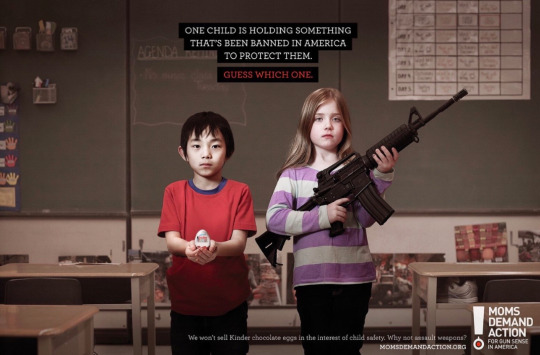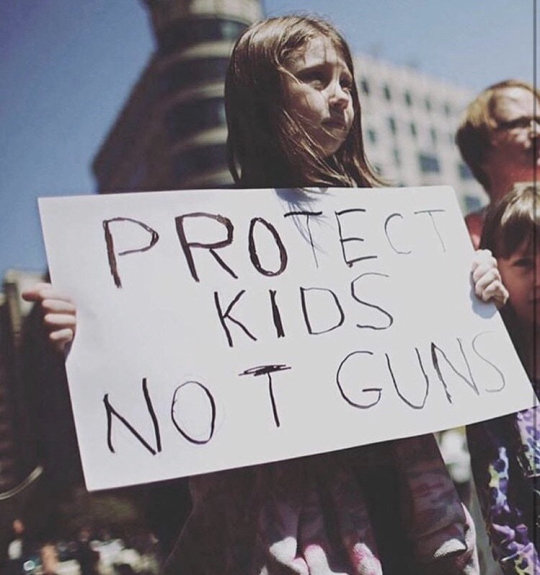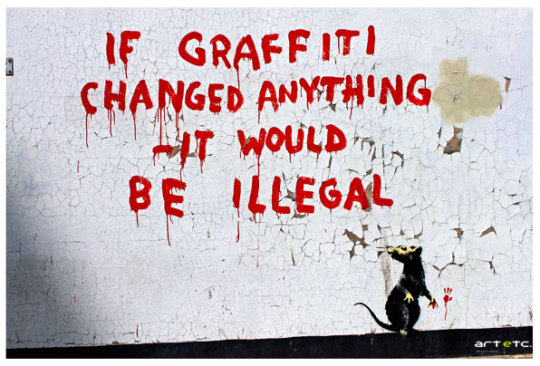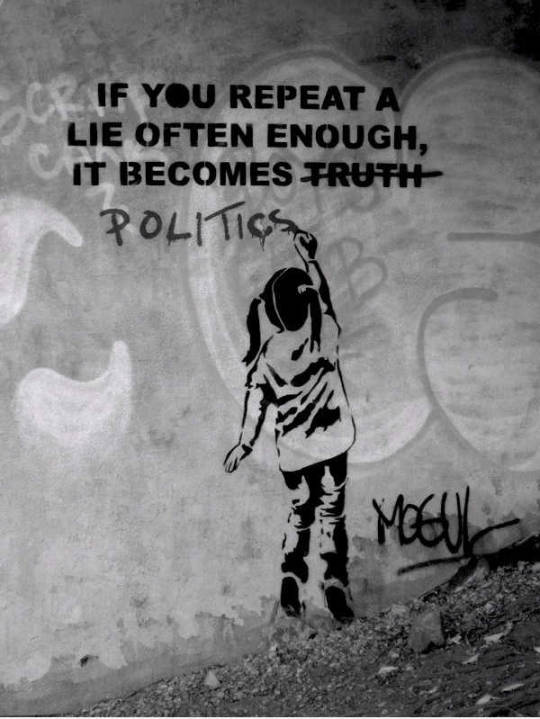Photo
Weibo amplified Yao Chen’s voice and lead her to be an actress and philanthropist!

OK! Magazine April 20th 2016
149 notes
·
View notes
Text
#Week11 Behind the Great Firewall of China
China’s online population is comprised of 731 million people; this size is similar to Europe’s population of 741.4 million (Worldometre, 2018)! According to a Boston Consulting Group Study, as a whole China spent more than 1 billion hours online daily in 2009 and was expected to double by 2015 (Michael et al 2010).

Globally popular social media sites including Facebook, Youtube and Instagram are blocked in China, however the Chinese equivalents keep the social media sphere booming and authorities can maintain control in-line with their strict censorship; this is known as the great firewall of china.
Even though of the digital barriers of the great firewall of China, Chinese citizens have the largest online population globally. This can be attributed to factors including ‘rural-to urban migration that has separated families…loneliness of the one-child generation, and a distrust of information from government-controlled media’ (Crampton, 2011).
The government’s strong censorship policies aim to uphold social order and protect national security, while avoiding unwanted foreign influence (Bloomberg News, 2017). The government hires over 50,000 people to implement censorship as a collaborative effort of ‘government monitors and the technology and communications companies’ (Bloomberg News, 2017). Example’s of the strict censorship includes the banning on Winnie the Pooh as he was compared in memes to Chinese President Xi Jinging. Additionally, images of animal the Grass-mudhorse were banned, as they are a phonogram for ‘motherfucker’ (Anti, 2011). Critics reflect that harsh censorship constrains innovation and the dissemination of ideas, while threatening free speech, where the government fears the uncontrolled spread of ideas that can threaten them.

Weibo is an example of China’s microblogging platforms, which can be equated parallel to Twitter. Anti (2012) notes that ‘anything not mentioned on Weibo does not appear to exist to the Chinese public.’ It gives users the ability to write 140 characters, where using Chinese characters enables users to write a long paragraph or a story. This is seen as a comprehensive social media platform where users can communicate and gather news and information. With over 340 Monthly users (BBC, 2017) this social media platform is powerful.
Weibo famous microblogger Yao Chen illustrates the power that is embedded amongst social media in our modern age. Yao Chen is one of China’s biggest influencers through Weibo with over 80.5 million followers (Koetse, 2017). Anti (2012) compares her influence to national television stations. Yao grew up in a middle-class family, where Weibo gave her a powerful and influential voice, which lead her to becoming an actress and philanthropist. Additionally she was globally recognized in 2014, being named in the top 100 influential people by Time Magazine and the 83rd most overfull women by Forbes. Crampton noted that in China ‘certain demographic can no longer be reached effectively via traditional media channels’ (2011), as many demographics have now shifted to social media.

From an external point of view we can definitely question whether the strict online censorship systems are for the protection of Chinese citizens or if this is a façade for the Chinese government seeking to protect themselves. With the biggest internet population in the world often the censorship is seen as ‘normal’ as many Chinese netizens do not know any different. The personalized social media platforms in China are shaped upon what is important to Chinese netizens and enables them to communicate with one another and hence people do not feel deprived.
References
Anti, M 2012, Behind the Great Firewall of China, TEDGlobal, June 2012, accessed on May 19 at https://www.ted.com/talks/michael_anti_behind_the_great_firewall_of_china
BBC 2017, Twitter user numbers overtaken by China’s Sina Weibo, accessed 18 May 2018, at http://www.bbc.com/news/technology-39947442
Bloomberg News 2017, The Great Firewall of China, accessed 18 May 2018, at https://www.bloomberg.com/quicktake/great-firewall-of-china
Crampton, C 2011, Social Media In China: The Same, But Different, accessed on May 19 at http://thomascrampton.com/china/social-media-china-business-review/
Koetse, M 2017, Chinese Celebrities with Most Weibo Followers: A Top 10 of 2017, Whats On Weibo, accessed 19 May 2018, at https://www.whatsonweibo.com/chinese-celebrities-weibo-followers-top-10-2017/
Michael, D, Zhou, Y 2010, China’s Digital Generations 2.0: Digital Media and Commerce Go Mainstream, The Boston Consulting Group, accessed 20 May 2018, at https://www.bcg.com/documents/file45572.pdf
Worldometers 2018, Population of Europe, Worldometers, accessed 18 May 2018, at http://www.worldometers.info/world-population/europe-population/
3 notes
·
View notes
Link
McInnes article brings to light the hyper-masculine industry of gaming and highlights the misogynistic gaming environment. Additionally, McInnes argues female stereotypes and the portrayal of women objectified as sex symbols in games is problematic.
0 notes
Text
#Week10 Gaming Communities: Playing the Crowd
What embodies the notion of a video game player and how can these player communities be toxic?

‘Play’ is identified as an intrinsic element of human development by exploring rules and skills and feeling as though you belong to a community. This has developed into the notion of the ‘player’ in a video game. A video game player learns skills and rules through entertainment, enjoyment and immersion into the video game. Huizinga acknowledges play as a free activity, which is outside the ordinary world and that absorbs the player ‘intensely and utterly (Farrell, 2018). He reflects that playing is without ‘boundaries of time and space and according to fixed rules,’ in a non-serious manner where social groups are formed (Farrell, 2018)
The virtual immersion experience can be encapsulated through Johann Huizinga’s (1938) theory of the ‘magic circle’ adapted to modern video games (Farrell, 2018). When Halfbrick’s popular mobile game Fruit Ninja is applied to Huizinga’s theory is asserts that the updated tactile effects in Fruit Ninja, offer a more engaging experience and allows players to suspend the real and be completely immersed and simulated into the game through the ‘magic circle.’

Roger Caillois reflects that ‘playing’ should be free, make-believe and separate from the boundaries of space and time (Caillois, 1961). Playing should also have an element of uncertainly, controlled by rules and unproductive and thus cannot produce wealth. Caillois proposed a theory compressing the 4 types of play from frivolous to more serious. These include, agon (competition), alea (chance), mimicry (simulation) and ilinx (vertigo) (Caillois, 1961). Agon refers to competitive games, in which skill, training and discipline must be applied, for example fantasy football games such as Supercoach AFL. Alea reflects chance, which is evident through the example of online gambling. Mimicry refers to the simulation of players as they escape the ‘real world’ to take on a character, evident in games, such as the Call of Duty. Lastly, illnx reflects the physical vertigo, which can be experienced through play; this is illustrated in the mobile game Fruit Ninja.

Toxic gaming communities have become an issue within the modern realm of video games. Gaming Journalist Melissa Brinks denotes the toxic gaming environment within the video game of League of legends. League of Legends game developers Riot Games are constantly having to develop systems such as word filtering, positive reinforcement and banning users to ‘combat hostile behaviors, poor sportsmanship, and racist, homophobic and misogynistic language in in-game chat’ (Brinks, 2018). ‘Disputes emerge through a conflict between the formal and contractual rules of a community and the informal social norms’ (Suzor et al, 2013, p.3), which can be a poor influence to a toxic gaming community that may bring out an ‘if you can’t beat them, join them’ mentality.
Ultimately, the traditional theories by Huzinga and Caillois have shifted into the realm of modern video games where the essence of their concepts are still relevant today. In addition, toxic video game communities have become a problematic part of video games, and while game developer’s work to remove the negativity in lies very much embedded within the culture of particular games.
References
Brinks, M 2018, 12 Games That Can’t Escape Their Own Aggressively Toxic Communities, Ranker, accessed on 13 May 2018, at https://www.ranker.com/list/video-games-with-toxic-communities/melissa-brinks
Caillois, R 1961, The Classification of Games: Man, play, and games, New York, Free Press of Glencoe, p. 11-36.
Farrell, C 2018, ‘Week 10 - Gaming Communities,’ MDA20009 Digital Communities, Learning materials on Blackboard, Swinburne University of Technology, 11 May 2018, viewed 11 May 2018
Suzor, N, Woodford, D 2013, Evaluating Consent and Legitimacy amongst Shifting Community Norms: An EVE Online Case Study, Legal and Governance Challenges, Journal of Virtual Worlds Research, Volume 6, Number 3, September ed., Queensland University of Technology.
2 notes
·
View notes
Text
#Week9 Public Health Campaigns & Communities
Should we always believe what we see, hear and read online?

The dominance of the online sphere and in particular social media as a device of modern communication has led to health campaigns and communication increasingly using social media to project their messages and to gain support. Pew asserts that approximately 83% of online users go online in seeking health information (Madden et al. 2011). While curating a space of two-way communication where people can ‘find support and tap into expansive information networks’ (McCosker, 2015), this concept of ‘digital health’ poses concerns for credibility and reliability of information and sources online.
16-year-old Geelong girl Sophia Gall uses Youtube channel ‘So Fia’ as a platform to discuss life with Ostereosarcoma Cancer, which she shares through a positive light with her optimistic attitude to her 150, 806 subscribers. From videos that delve into what it is like living with cancer to her travels and love for make-up Sophia reflects the positives of health communication through social media. She has built an online community, where she can reach out, assure sufferers globally that they are not alone and provide a vision of strength, resilience and inspiration.

Sophia’s Youtube channel amplifies her interactions with others, increases available information and awareness of ostereosarcoma cancer and offers peer, social and emotional support (Moorhead et al 2014). According to McCosker, health communication through social media is a place where ‘empowerment has been a common theme’ where ‘blogs have been a successful as a tool for ‘emotion management’ and ‘information sharing’ (Chung & Kim, 2008: 303; McCosker, 2008, McCosker, 2015). Sophia’s self-documenting YouTube facilitates support and discussion in the comments section and also feeds into her other social media’s including Instagram, Twitter and Snapchat.
However social media health communication can bring to light concerns such as self-diagnosis and credibility of Internet sources. By hearing about Sophia’s particular cancer symptoms people can self-diagnose without checking with a medical professional. Also, while Sophia does not disclose medical advice to others through her channel, many online sources provide information with isn’t reliable or trustworthy, including sites such as http://doctoryourself.com.

Concerns of health communication through social media are issues of the credibility and trustworthiness of information and stories. This was illustrated in the example of Belle Gibson who mislead people into believing that she had brain cancer and conquered it through a particular diet, in which she created a blog, app and wrote a book called ‘The Whole Pantry.’ As suspicions on her grew, an investigation into her story began in June 2016, which landed her in court with a $410,000 fine of her misleading cancer claims (Percy, 2018). Gibson is a prime example of the fact that we cannot always believe what we see, hear or read on the Internet. To overcome the issue of credibility and trustworthiness online The Department of Human Services has generated access to specialists on their government side, to fulfill and in understanding of the way people are looking more toward online sources to seek medical information.
Additionally, the issue of superficiality is associated with the concept of ‘digital health.’ Similarly to clicktivism in online protest, superficiality refers to a shallow level of engagement such as through ‘commenting’ or ‘retweeting’ in regard to online health campaigns such as Movember and the ALS ice bucket change. It is argued that a correlation is between a popular health campaign and increased superficiality. Large health campaigns such as Movember may detract from the central message of amplifying the importance of men’s health of the cause and result in one way communication without ‘on-going conversations between users, organizations, and their followers’ (Innovations in Health Communications, 2018).
While sources and information are not always reliable online, these platforms can generate accessible information and a supportive environment locally and internationally. It can also help sufferers of particular illnesses to manage their emotions and self-document their experience. Despite superficiality of online health campaigns possibly detracting from core messages, the amplification of these campaigns on social media are a positive way to promote organizations and campaigns, raise funs and gain awareness.
References
Chung, D.S and Kim, S 2008, Blogging Activity among Cancer Patients and their Companions: Uses, Gratifications and Predictors of Outcomes, Journal of the American Society for Information Science and Technology, 59(2), p. 303
Innovations in Health Communications 2018, ‘Social Media Use for Public Health Issues: Superficial or Sustainable?’ Accessed 8 May 2018, at https://ihealthcomms.wordpress.com/2015/07/19/social-media-use-for-public-health-issues-superficial-or-sustainable/
Madden, M, Zickuhr, K 2011, Pew Internet and American Life Project, United States: The Pew Research Centre,
McCocker, A 2008, Blogging Illness: Recovering in Public, M/C Journal, 11(6), http://bit.ly/1HZY8el
McCosker, A 2015, Digital Mental Health and visibility: Tagging Depression, located in P. Messaris and L. Humphreys, Digital Media: Transformations in Human Communication (2nd edn), Peter Lang.
Moorehead, S.A, Hazlet, D.E, Harrison L, Carrol, J.K, Irwin, A, Hoving, C 2014, A New Dimension of Health Care: Systematic Review of the Uses Benefits and Limitations of Social Media for Health Communication, Journal of Medical Internet Research, 15(4), p. 85.
Percy, K 2018, Fake wellness blogger Belle Gibson fines over cancer claims, ABC News, accessed 8 May 2018, available at http://www.abc.net.au/news/2017-09-28/disgraced-wellness-blogger-belle-gibson-fined/8995500
0 notes
Text
#Week8 Crowdsourcing during the #NepalEarthquake Crisis

Crowdsourcing refers to ‘an online, distributed problem-solving and production model that leverages the collective intelligence of online communities to serve specific organization goals (Brabham, 2013). Magazine editor Jess Howe coined the term crowdsourcing in June 2006 in his article ‘The rise of Crowdsourcing.’ Despite being a concept with a rich history, crowdsourcing was coined and recently brought to live through the amplification of new technologies such as the Internet and social media. Through recent years crowdsourcing is being used more frequently and effectively in times of natural disasters and crisis around the world. Social media’s platform of multi-dimensional communication enables instantaneous messages, circulation of information, dispersed points of view, recovery response, promote crowd funding, encourage donations and help to support those in need.
Crowdsourcing communication systems and structures are evident within these times of crisis through centralized, decentralized and distributed networks. Through the example of the Nepal Earthquake, centralized networks refer to governing forces such as the Nepalese police. The decentralized crowdsourcing refers to the reliance of other people online such as of journalists and witnesses to inform of the Nepal earthquake. Finally, a distributed network refers to information distribution without a core source.
Crowdsourcing is more commonly becoming a relied on aspect of communication before, during and after a crisis (Ponsetti, J, Lo, P 2012). Crowdsourcing is illustrated through the Nepal’s 2015 magnitude Earthquake, which struck with a magnitude of 7.8 followed by an unexpected 7.3 magnitude earthquake 17 days afterwards (Montgomery, 2016). The catastrophe of the earthquakes led to over 3,800 people killed and over 7, 100 people injured, proving to be Nepal’s worst earthquake in 80 years (Barry, 2015).


Crowdsourcing promotes global awareness, enables finding survivors and finally allows a platform for crowd funding in times of crisis (NewzSocial, 2015). Global awareness is raised through crowdsourcing as the news of the earthquake instantaneously went viral through the #NepalEarthquake hashtag as witnessed videos and comments were shared and information was disseminated. In crisis situations amateur footage becomes valued as rawness and immediacy, which is significant to promoting instant awareness.
Secondly, the finding of survivors and their location is an imperative sector of crowdsourcing, which social media facilitates. The 2011 Japanese Tsunami prompted Facebook to innovate their ‘Safety Check’ feature. This feature is activated in areas of wide-spread emergency, where people in the area are prompted to let their family and friends know they are safe through a notification sent to all Facebook friends. This was utilized at a tool in the Nepal earthquake where people could notify friends and family if they were safe as well as enabling people to answer for their friends also who may not have access to a working device (Time, 2015).
youtube
Finally, crowdsourcing provides a platform for crowd funding. Following the Nepal Earthquake Facebook used their platform to raise over ‘$10 million in two days’ (NewzSocial, 2015). Twitter also used their platform to promote fundraising through UNICEF (Avakain, 2015,). Additionally, ITunes utilized their platform to raise funs for the American Red Cross to donate to the appeal. Also, more than $4 million were raised through 553 campaigns through ‘the three largest crowdfunding sites – GoFundMe, Crowdrise, Indegogo’ (NewzSocial, 2015).
Crowdsourcing reflects online and social media platforms to be imperative in a situation of crisis before, during and in the aftermath as a device to promote global awareness, facilitate safety check features and support by raising funds in the aftermath of a crisis.
References
Avakain, C 2015, How social media platforms are responding to the Nepal Earthquake, and how you can help, Social Brite, accessed 3 May 2018, at http://www.socialbrite.org/2015/04/28/how-social-media-platforms-are-responding-to-the-nepal-earthquake-and-how-you-can-help/
Barry, E 2015, Social Media Services for Nepal Earthquake, New York Times, accessed 2 May 2018, at https://www.nytimes.com/live/earthquake-katmandu-nepal-updates/social-media-services-for-nepal-earthquake/
Brabham, C 2013, Crowdsourcing, Cambridge, Massachusett; Londom, England: The MIT Press, p. 1.
Montgomery, K 2016, Quick facts: What you need to know about the Nepal Earthquake, Mercy Corps, accessed 2 March 2018, at https://www.mercycorps.org/articles/nepal/quick-facts-what-you-need-know-about-nepal-earthquake
NewzSocial 2015, #SocialMedia and #BigData: Significant Role in Nepal’s Earthquake Relief Efforts, accessed 3 May 2018, at https://www.newzsocial.com/resources/blog/social-media-marketing/socialmedia-and-bigdata-significant-role-in-nepals-earthquake-relief-efforts/
Ponsetti, J, Lo, P 2012, The Twitterisation of ABCs Emergency and Disaster Communication, The Australian Journal of Emergency Management, Volume 27, No.1, p. 34-36.
Time 2015, Tech Time: How Facebook’s Safety Check Is Evolving, posted December 3 2015, viewed on May 2 2018, at https://www.youtube.com/watch?v=B48zRqcHiBk&t=50s
3 notes
·
View notes
Video
words are powerful
undefined
tumblr
Kanye says slavery was a choice…
1K notes
·
View notes
Video
youtube
(via https://www.youtube.com/watch?v=YkzwHuf6C2U)
#ReThinkBeforeYouType stopping the problem of cyber bulling with a long-term solution
4 notes
·
View notes
Video
youtube
(via https://www.youtube.com/watch?v=vWBvXRVMPDU)
ANTI-BULLYING CAMPAIGN
11 notes
·
View notes
Text
#Week7 Trolling & Cyberbullying

..they say
So should we just ignore them?
People can contribute negatively to the digital sphere through media misuse. An aspect of media misuse can be online trolling. Trolling is the act of provoking and creating chaos online with malicious intent to aggravate (Coles et al., 2016). Repetitive and harmful actions of trolling can be attributed to the social distance generated through the online virtual space, performance to provoke a reaction from an audience and without consequences, as the digital landscape has commonly been consequence free zone (Tedx Talks, 2013)
Anonymity online also facilitates a space where trolls have the ability to hide their personal identity and generate counter-normative behavior and deindividualisation (Coles et al, 2016). It develops a mask in the virtual space giving people the ability to say anything with the confidence of the barrier of their screen. Additionally, anonymity enables people to ‘harass, pester and bully other people online.. and its hard for platforms to design systems to stop them’ (Lafrance, 2017).

Whilst bullying has been around for a long time, the online sphere has created a new platform for it to occur. Cyberbullying occurs through ‘aggression, repetition and imbalance of power’ (Boyd, p. 132) and something which is often sustained. Emotional duress of bullying is heighted through amplification and visibility in an online space where a large audience can potentially be a witness (Boyd, p. 133).
Intiatives have been put in place to combat cyberbullying. The Alannah and Madeline foundation have created an eSmart initiative in aim to create a safer online environment for students. Over 1400 Victorian schools have signed up to participate in the initiative and they are supported through a $2000 grant. The initiative assists schools to ‘create their own plans, policies and procedures’, ‘access the latest resources, tools and information,’ and ‘record, track and report on their progress in achieving eSmart status’ (Education.vic.gov.au, 2018).
Chloe Fergussion was cyberbullied, in which her story lead to change is federal legislation. Chloe was bullied physically, verbally and online ongoing for over 8 years, where sadly at the age of 15 in 2013 she ended her life. Her family collected over 48, 000 petition signatures driven to change federal laws in regard to cyber bullying (Critchley, 2016). This resulted in the federal body of the eSafety commissioner to be established in 2015 to create safer and more positive online environments for all Australians, particularly children, which educates about reporting harmful content and includes information for parents and schools (Critchley, 2016).

What does the future hold?
With the ever-evolving social media landscape, trolling is set to rise. However many are more concerned about due to trolling, sharing platforms may no longer be ‘free for all zones’ (Anderson et al, 2017), which can suppress free speech, compromise privacy and impact open discussion of ideas.
Ultimately, trolls should not be ‘fed’ as that is exactly what they are seeking to provoke or to trigger a reaction. It is also important to not ignore or stay silent about the issue, as things need to be done to be able to defeat these harmful online acts. ‘The Internet is borderless, so is the abuse’ (Laville, 2018), indicated in The Guardian as the vast and infinite digital landscape needs proper regulation structures to be able to filter out the digital citizens who inappropriately and disrespectfully use the online space.

References
Boyd, d. (2014) ‘Bullying: Is the Media Amplifying Meanness and Cruelty?’, in It’s Complicated: The Social Lives of Networked Teens, pp 128-52.
Lafrance, A 2017, Trolls are Winning the Internet, Technologist Say, The Atlantic, accessed online 16 April at
https://www.theatlantic.com/technology/archive/2017/03/guys-its-time-for-some-troll-theory/521046/
eSafety Commission, 2018, Digital Citizenship, eSafety Commission, viewed 13 April 2018, < https://www.esafety.gov.au/education-resources/classroom-resources/digital-citizenship
Tedx Talks, 2013, The problem with "Don't Feed the Trolls" | Steph Guthrie | TEDxToronto, posted October 2013, viewed on April 24 2018 at https://www.youtube.com/watch?v=_KHEkR5yb9A
Education.vic.gov.au. 2018, eSmart, Viewed on 24 April 2018, available at: http://www.education.vic.gov.au/about/programs/bullystoppers/Pages/esmart.aspx
Laville, S, 2018, The women abandoned to their online abusers, The Guardian, viewed 24 April 2018, available at: https://www.theguardian.com/technology/2016/apr/11/women-online-abuse-threat-racist
Critchley, C, 2016, A Guide to Australian Cyber-Bullying & Sexting Laws - Parent Guide, viewed April 24 2018, Available at:http://parentguides.com.au/australian-cyber-bullying-sexting-laws/
1 note
·
View note
Text
Trolling & Social Media Presentation Link
http://prezi.com/xmyegasef2x8/?utm_campaign=share&utm_medium=copy
0 notes
Video
youtube
(via https://www.youtube.com/watch?v=7plfuM25ST0)
This Youtube clip depicts the way social media ignited the #March4yourlife protest and activism, mobilising the movement and facilitating a mass arena through digital citizenship enabling coordination of public action
0 notes
Text
#Week6 Digital Citizenship 2: Activism & Protest

How does social media facilitate activism and protest?
Social media facilitates the opportunity to express and interact with like-minded activists. Cultural and political groups such as artists and activists utilize new media as an ‘inexpensive and powerful tool for challenging the givens of mainstream or popular culture’ (Lievrouw, 2011, p. 2). Through citizen media, networked publics support the position social media in constructing and empowering activism. It generates a digital space where ‘publics can be reactors, (re)makers and (re)distributors, engaging in a shared culture’ through discourse and social exchange (Ito, 2008, p. 6).

The recent March for our lives campaign illustrates the empowering tool of social media intertwining with activism to spread passion and a sense of unity in creating public action. In working toward change in Americas gun laws this campaign was created following the 17 dead during mass shooting at Marjory Stoneman Douglas High School in Florida on Febuary 14.
It all became too real for teens Cameron Kasky, 17, Delaney Tarr, 17 Alex Wind, 17 and Emma González, 18, after witnessing the school shooting. Their anger and pain fueled their passion to campaign, determined change the American gun laws. Majority of these teens below the legal voting age they claim social media was their weapon building their campaign and disseminating the message internationally. This is where social media was utilized to run a low budget and powerful campaign as it simulated global passion and engagement for legislative change in the US.
Perhaps more commonly known though the social media hashtags #Neveragain and #March4ourlives, social media broke down geographical barriers as the campaign attracted colossal audiences with over ‘800 simultaneous events taking place across cities on every continent’ and have enabled connection and communities of like-minded people who support the change (Reynolds, 2018). The campaigns main event took place at Washington D.C, which brought together an estimation of 850, 000, where children held powerful sign’s ‘Am I next?’ or ‘I want to read books not obscurities.’ To coordinate public action such as the huge attendance can be attributed to the arena of social media to organize this powerful protest. March for your lives activist Emma González has gained over 1.5 million followers giving her the opportunity to a amplify her voice as citizen media have chosen to uplift, support and stand collectively with her to build and spread her message for change.
As faces such as González lead the voice of their protest, many also turn to anonymity to project his messages freely without fear of authority.


English Artist Bansky is a known for his anonymity as he refuses social media, however his messages are disseminated on digital platforms through audiences and critics of his art. Bansky’s best-known graffiti stencil style is the voice to his protests, expressing ‘unsaid statements that normally people fear to spell out’ (Das, 2013). Banksy’s art is a spectacle and highly respected through the controversial statements he projects. However, voices can be ‘constrained by company policies and user terms governing, among other things, intellectual property, community policy provisions, anonymity and violent content’ (Lafi Youmans, 2012). Banksy’s anonymity is what gives him his power to address his subversive and recklessly protestant nature (Das, 2013).
However, ‘slacktivism’ through activism in social media addressed the tasks such as ‘liking’ or signing a petition through social media, which takes little time and effort and ultimately does not lead to change.
Social media is a powerful tool that connects digital citizens and creates a participatory space where powerful messages of activism and protest can be voiced and globally projected.
References
Das, A 2013, Banksy: Stenciled Protests, Artnewsnviews.com, accessed 17 April 2018 at http://www.artnewsnviews.com/view-article.php?article=-banksy-stencilised-protests&iid=31&articleid=897
Lafi Youmans, W & York, J 2012 ‘Social Media and Activists Toolkit’, Journal of Communication, pp 315-329.
Leah Liewrouw 2011, Alternative & Activism Media: Cambridge, U.K: Malden Mass Polity. p.2.
Mizuko Ito, 2008 Networked Publics, MIT Press, p. 6.
Reynolds, E 2018, Brutal message to Trump after epic gun march, NewsComAu, accessed 16 April 2018 at http://www.news.com.au/world/north-america/protesters-pack-streets-of-washington-for-biggest-march-in-decades/news-story/522d464ee6bd727b891a5dc98be26293?from=rss-basic
4 notes
·
View notes
Text
Are Trumps tweets amateur, strategic, authentic or just damn unprofessional???
"Crooked Hillary Clinton put out an ad where I am misquoted on women. Can't believe she would misrepresent the facts! My hit was on China"
Crooked Hillary Clinton put out an ad where I am misquoted on women. Can’t believe she would misrepresent the facts! My hit was on China — Donald J. Trump (@realDonaldTrump) May 17, 2016 //platform.twitter.com/widgets.js
View On WordPress
4 notes
·
View notes
Video
youtube
POLITICS AND CIVIC ENGAGEMENT
Even the smallest of actions can pave the way for future empowerment and political changes for women rights.
8 notes
·
View notes




